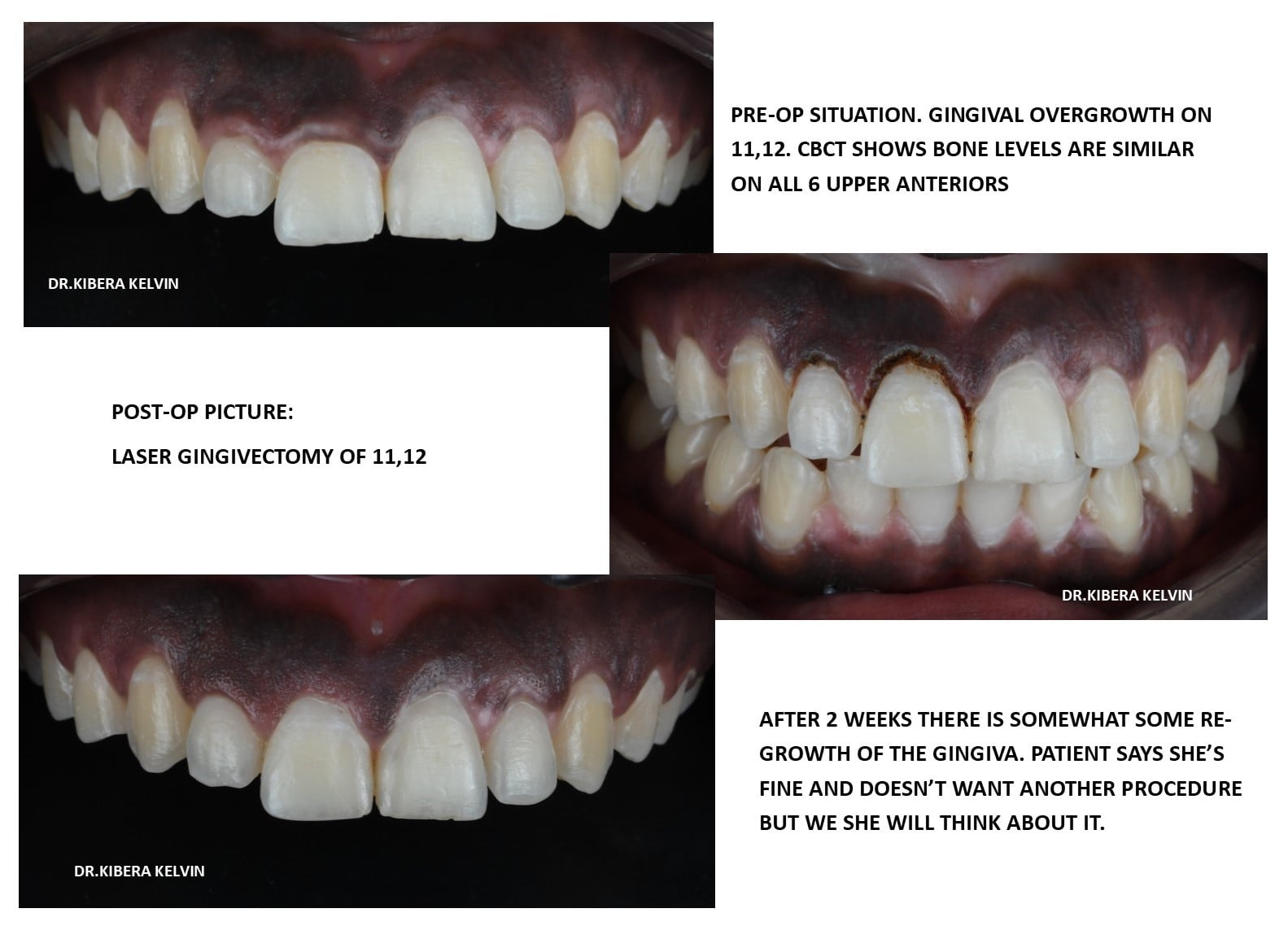Gum reduction is a cosmetic dentistry operation that involves the removal of extra gum tissue to enhance the look of the gums and teeth. It is also known as gingival sculpting or gingivectomy. This operation is frequently performed for cosmetic reasons, as extra gum tissue can make teeth look shorter and less appealing.
Gum reduction begins with a consultation with a dentist or periodontist, who will evaluate the gums and teeth to identify the best course of therapy. During the process, the dentist will remove superfluous gum tissue with a laser or scalpel, contouring the gums to show more of the tooth structure. The treatment is usually done under local anesthetic, and recovery time varies according to the degree of the surgery.
Gum reduction can improve the appearance of the teeth and gums, making them more symmetrical and aesthetically pleasant. It can also enhance tooth function, since extra gum tissue can make cleaning and maintaining adequate dental hygiene difficult. Furthermore, gum reduction can lower the risk of gum disease by eliminating plaque and germs that can build up in excess gum tissue.
It is crucial to remember, however, that gum reduction should not be seen as a replacement for appropriate oral care or regular dental check-ups. It’s also vital to keep up with healthy practices like brushing and flossing twice a day and going to the dentist for regular cleanings.
While gum reduction can improve the look of your gums and teeth, it is not without dangers and problems. During the recuperation phase, these might include bleeding, infection, and discomfort. Before undertaking the operation, it is critical to address these risks with your dentist.
Finally, gum reduction is a cosmetic dentistry operation that removes extra gum tissue to enhance the look of the gums and teeth. It can also enhance tooth function and minimize the incidence of gum disease. However, basic oral hygiene and frequent dental check-ups are essential, as is discussing any potential risks and issues with your dentist before undergoing the treatment.












